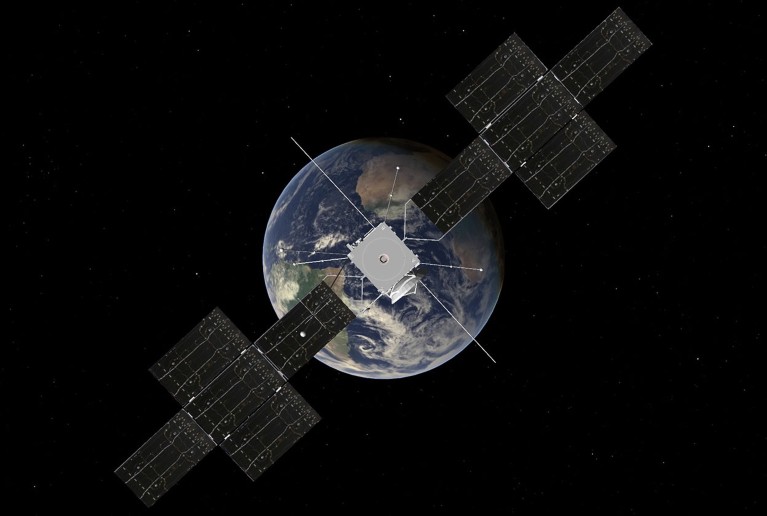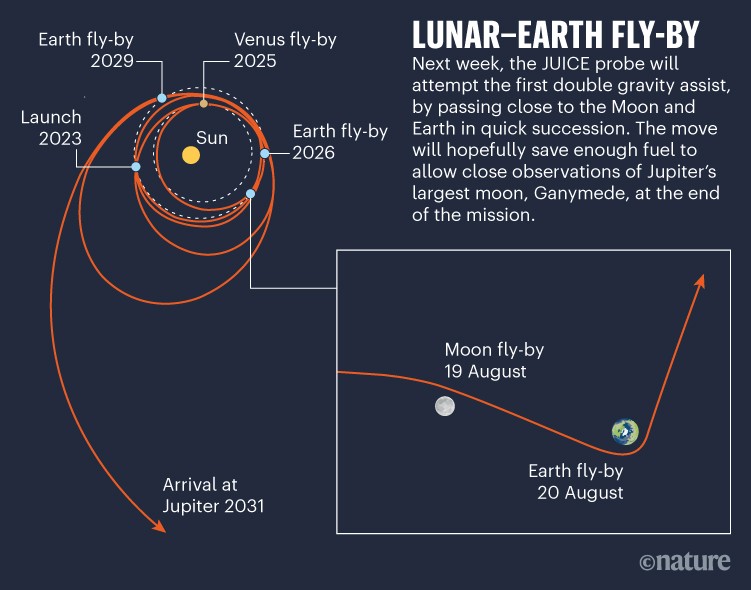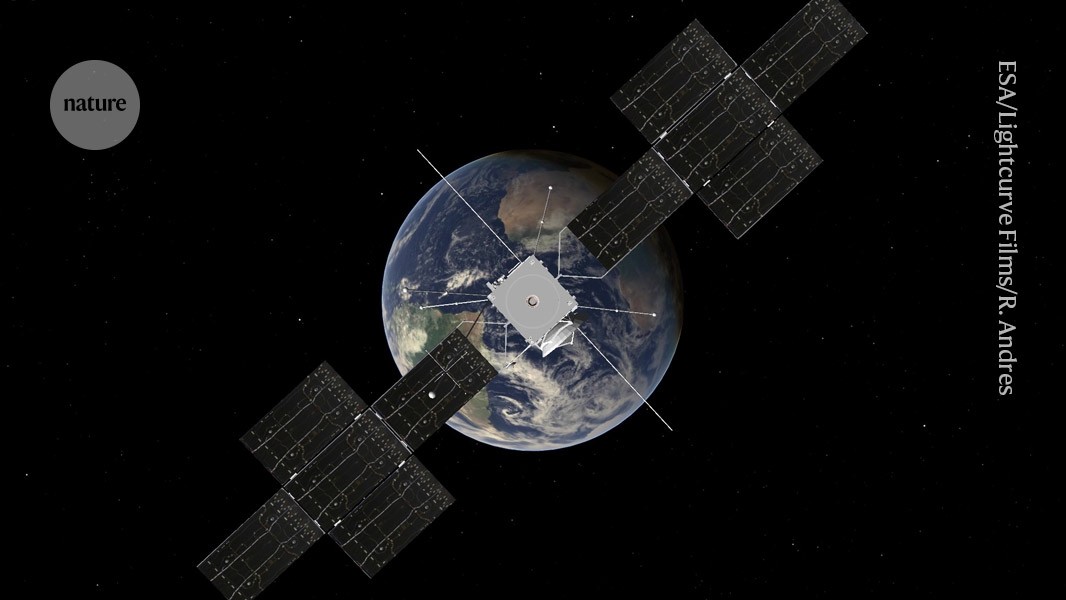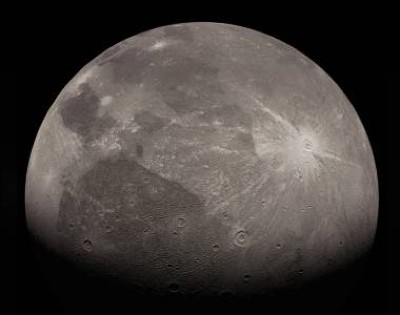
The Jupiter Icy Moons Explorer spacecraft approaching Earth (artist’s impression).Credit: ESA/Lightcurve Films/R. Andres
Next week, the Jupiter Icy Moons Explorer (JUICE) probe will whip past both the Moon and Earth on its way to deep space, as part of a daring and previously untried double fly-by manoeuvre.
The European Space Agency (ESA) mission is one year into its elaborate eight-year journey and will eventually visit three of Jupiter’s moons. The craft will harness the gravity of Earth, the Moon and Venus to reach Jupiter using as little fuel as possible.
On 19 and 20 August, the mission will fly past the Moon and Earth in rapid succession, performing the first-ever double gravity-assist manoeuvre. JUICE will first reach the Moon, harness the lunar gravity to brake and change course and then swing around Earth a day later, further altering its speed and direction. There is no plan to readjust its trajectory between the fly-bys.

Source: ESA
The Moon is usually treated as a perturbation to factor into account when spacecraft slingshot around Earth, but harnessing its pull can save propellant. The lunar gravity-assist technique, combined with the timing of JUICE’s launch in April last year, will save enough fuel to allow the probe to orbit Jupiter’s moon Ganymede at just 200 kilometres in 2035, at the end of the mission. “That’s great news in terms of the science,” JUICE mission analyst Arnaud Boutonnet, at the ESA European Space Operations Centre (ESOC) in Darmstadt, Germany, told reporters at a press conference last Friday.
Jupiter mission will be first to orbit moon of another planet
The double gravity-assist move is risky, because each fly-by will amplify any errors in the craft’s trajectory. “It’s like passing through a very narrow corridor, very, very quickly: pushing the accelerator to the maximum when the margin at the side of the road is just millimetres,” said the mission’s spacecraft-operations manager, Ignacio Tanco at ESOC, in a statement. But performing the manoeuvre close to home will be an opportunity to test whether JUICE’s scientific instruments are working as planned, in an environment that researchers know well, said Claire Vallat, operations scientist for the mission at ESA in Madrid, at the briefing. “This is a unique opportunity to study those instruments.”
The spacecraft’s circuitous route is by design. The Earth–Moon fly-by will slow down JUICE and deflect its course on a shortcut towards Venus. JUICE will gain energy as it swings around Venus, and two further gravity assists from Earth — in 2026 and 2029 — will eventually sling the craft out towards Jupiter.



